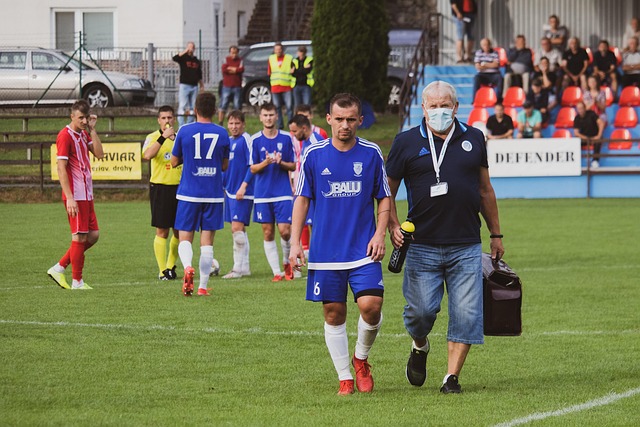Healing from Post-Traumatic Stress After a Bicycle Dooring Accident

Bicycle dooring accidents can cause more than physical harm; they frequently lead to post-traumatic…….
In recent years, the term ‘bicycle dooring accident’ has gained prominence as an emerging concern in urban mobility and road safety. This phenomenon refers to incidents where cyclists are struck by vehicle doors opening into their path, leading to potential injuries or collisions. With the increasing popularity of cycling as a sustainable mode of transportation in cities worldwide, understanding and addressing these accidents have become imperative. This article aims to provide a comprehensive analysis of bicycle dooring accidents, exploring their causes, impact, global reach, technological solutions, and policy implications. By delving into these aspects, we can gain valuable insights into enhancing cyclist safety and fostering a harmonious sharing of the road.
Definition:
A bicycle dooring accident is a collision or near-miss involving a cyclist and a vehicle, where the primary cause is a motorist opening their vehicle door without proper observation, resulting in the cyclist being caught off guard and potentially struck.
Core Components:
Historical Context:
While bicycle dooring accidents are a modern concern, the issue has persisted since bicycles and motor vehicles began sharing the road. However, with the rise of urban cycling in the 21st century, these incidents have gained more attention due to their potential impact on cyclist safety and community perception.
Significance:
International Influence:
Bicycle dooring accidents are not limited to a specific region but have been reported worldwide, indicating a universal challenge in urban mobility. The impact varies across countries based on cultural cycling habits, traffic laws, and city infrastructure.
Regional Variations:
Trends Shaping the Trajectory:
Market Dynamics:
The economic implications of bicycle dooring accidents are multifaceted. While the immediate cost involves medical expenses and potential legal settlements, the long-term impact extends to city infrastructure investments and industry growth.
Investment Patterns:
Role in Economic Systems:
Innovations in Safety:
Technological advancements play a pivotal role in enhancing cyclist safety and reducing dooring accidents:
| Technology | Description | Impact |
|---|---|---|
| Side-view Cameras | Integrated into vehicles, these cameras provide a wider field of view, aiding drivers in seeing cyclists more clearly when opening doors. | Reduces blind spots, potentially preventing many dooring accidents. |
| Cyclist Detection Systems | Advanced driver assistance systems (ADAS) using sensors and AI to detect cyclists and alert drivers, sometimes automating door closure or braking. | Offers real-time warnings and may autonomously mitigate potential collisions. |
| Smart Traffic Signals | Adaptive traffic light systems that consider cyclist and pedestrian flows, optimizing signal timings for safer interactions. | Enhances overall road safety by reducing conflicts between cyclists, pedestrians, and vehicles. |
| Cycling Infrastructure Tech | Smart sensors embedded in cycling paths to monitor traffic flow, detect accidents, and provide real-time data to authorities. | Enables rapid response to incidents, including dooring accidents, and aids in infrastructure planning. |
Future Potential:
The integration of autonomous vehicles into urban environments raises intriguing possibilities for cyclist safety. Self-driving cars, equipped with advanced sensors and AI, could potentially eliminate many dooring accidents through their enhanced situational awareness. However, the realization of this technology faces significant technical and regulatory challenges.
Key Policies and Frameworks:
Governments worldwide have implemented various policies and regulations to address bicycle dooring accidents:
Influence on Accident Reduction:
Well-enforced policies have shown positive outcomes:
Challenges and Gaps:
Despite progress, challenges remain:
Main Challenges:
Proposed Solutions:
Case 1: Amsterdam’s Cycling-Friendly City Planning
Amsterdam, Netherlands, is renowned for its cycling-friendly infrastructure and culture. The city’s comprehensive approach involves:
Lessons Learned:
Case 2: New York City’s Dooring Laws and Infrastructure Improvements
New York City implemented targeted initiatives to combat dooring accidents:
Outcomes:
Emerging Trends:
Growth Areas:
Strategic Considerations:
Bicycle dooring accidents represent a complex challenge in urban mobility, requiring a multifaceted approach to address their causes and mitigate their impact. From global awareness and policy reforms to technological innovations and community engagement, the path to safer cycling involves collaboration and strategic planning. By learning from successful case studies and adopting best practices, cities can create environments where cyclists and drivers coexist harmoniously, reducing dooring accidents and enhancing overall road safety.
Q: How common are bicycle dooring accidents?
A: While exact statistics vary by region, these incidents are a significant concern in urban areas with high cycling rates. They account for a substantial number of cycling-related injuries and collisions, especially in dense traffic conditions.
Q: Who is most at risk in these accidents?
A: Cyclists are generally more vulnerable due to their lack of protective gear and physical barriers. However, both cyclists and motorists can be at risk, with outcomes depending on various factors like vehicle speed and the cyclist’s reaction time.
Q: What role does driver behavior play?
A: Driver behavior is a critical factor. Opening doors without checking for cyclists, failure to yield, and inadequate attention while driving contribute significantly to these accidents. Educating drivers about cyclist safety is essential for accident prevention.
Q: How can technology help prevent dooring accidents?
A: Advanced technologies like side-view cameras, cyclist detection systems, smart traffic signals, and cycling infrastructure sensors offer real-time warnings and data for improved decision-making, potentially preventing many dooring incidents.
Q: Are there legal protections for cyclists in these cases?
A: Legal protections vary by jurisdiction. Some countries have specific laws prioritizing cyclist safety, while others rely on general traffic laws. Adequate legal frameworks and compensation policies encourage injury victims to seek redress and contribute to accident prevention through increased awareness.

Bicycle dooring accidents can cause more than physical harm; they frequently lead to post-traumatic…….

Bicycle dooring accidents, where cyclists are hit by opening car doors, are a growing urban concern……..

A bicycle dooring accident occurs when a cyclist is hit by an opening car door while passing parked…….

Bicycle dooring accidents, a growing concern in dense urban areas, involve cyclists struck by openin…….

After a bicycle dooring accident, prioritize safety and health. Even if initially unharmed, seek med…….

Bicycle dooring accidents, where cyclists are hit by opening car doors, pose serious risks due to cy…….

Bicycle dooring accidents can cause physical injuries and lead to Post-Traumatic Stress Disorder (PT…….

Bicycle dooring accidents, a growing urban concern, occur when vehicles open doors into cyclists…….